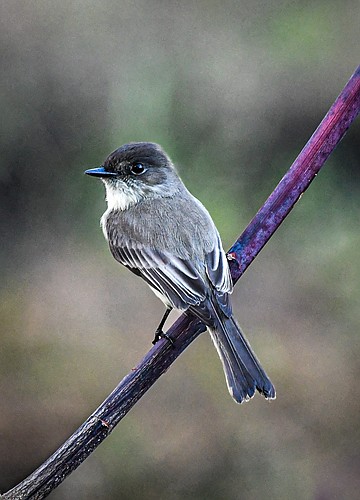- April 27, 2024
-
-
Loading

Loading

With cold weather up north forcing many birds to head south, Florida is now a bona fide bird lover's wonderland. Head outside and find a low-hanging tree, then linger to enjoy the chorus of calls coming from its understory. Perhaps you'll hear the Eastern phoebes’ distinctive song, that gives this species its name.
A medium-sized bird, the Eastern phoebe breeds in eastern North America. One of the last birds to head south, it is also one of the first of our migrants to return north in the spring. An insectivore, this member of the flycatcher family forages using a “sit and wait” strategy. You might spot them sitting on a low perch, tail wagging. When prey is spotted, off they dart, catching their food in mid-air. As their diet includes many insects us humans could happily do without (such as wasps, flies, centipedes and ticks), though somewhat plain, these birds make for fantastic yard guests.
Famed ornithologist John James Audubon was quite fond of phoebes. In1803, he carried out one of the earliest bird-banding experiments in North America, when he attached silver thread to the legs of Eastern phoebe nestlings before they migrated. He did this to determine whether the same birds come back to that particular nesting area every year. The next spring, he recaptured two of the banded phoebes, which had indeed returned to the same location, illustrating a phenomenon we now call “site fidelity.”
Today, bird banding is used to track birds' migratory movements and gather population counts. This information plays a critical role in designing and implementing conservation programs for different species of birds, especially shorebirds, threatened due to habitat loss and degradation.
Save our Seabirds is a non-profit organization whose mission is to rescue and rehabilitate sick and injured birds, releasing as many as they can, while educating our community about avoiding injuries and preserving habitats.